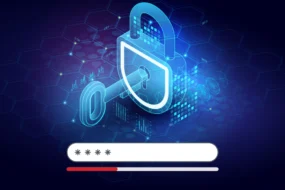Digital threats pose an increasing danger to both personal and corporate data security. The prevalence of spam, spyware, and other malicious software (commonly referred to as malware) has skyrocketed in recent years, leading to a significant rise in cybercrime. The good news is that we can significantly reduce the risks associated with these threats with the appropriate tools and understanding. In this article, we will explore some of the best strategies to combat spam, spyware, and malicious software.
Understanding the Threats

Before delving into the defense strategies, it’s essential to understand the types of threats we’re facing. Spam, for instance, refers to unwanted or unsolicited emails, usually sent in bulk, often carrying harmful attachments or links. Spyware, on the other hand, is software that covertly gathers information about a user’s online behavior without their consent, often leading to privacy breaches. Malicious software, a more general term, encompasses various types of harmful software, including ransomware, viruses, and worms, which can damage computer systems, steal data, or disrupt operations.
The Power of Prevention
The first step to defeating digital threats lies in adopting a proactive approach. Prevention is, by far, the most effective strategy against spam, spyware, and malware. It involves several elements, including safe browsing habits, secure network connections, and reliable security software.
Safe browsing habits encompass avoiding suspicious websites, being cautious with downloads, and never opening email attachments from unknown sources. Furthermore, regularly updating and patching software ensures the closure of vulnerabilities that malicious actors could exploit.
Secure network connections are also crucial in preventing unwanted intrusions. Here is where the concept of DNS filtering comes into play. DNS (Domain Name System) is akin to a phone book for the internet, translating user-friendly domain names into numerical IP addresses that computers use to communicate. DNS filtering refers to blocking access to certain websites or IP addresses to prevent access to sites known for hosting malware or other security threats. By using DNS filtering, users can dramatically enhance their cybersecurity posture.
Implementing Robust Security Software

Another critical line of defense against digital threats is deploying robust security software. This includes antivirus and anti-malware programs, firewalls, and spam filters. Such software actively scans and monitors your system for threats, blocking and removing them as they’re found. This combination protects against known threats and helps detect and thwart new, emerging ones.
Anti-spam software, in particular, is effective against unsolicited emails. It filters incoming emails, separating potential spam into separate folders for review and deletion. This greatly reduces the risk of accidentally opening a spam email and potentially introducing malware into the system.
Implementing Robust Security Software
Backing up your data might not prevent a cyber-attack, but it is a powerful tool in mitigating the damage inflicted by one. Regular backups ensure that even in a successful malware attack, such as ransomware that encrypts all your files, you can restore your data without paying the ransom.
User Awareness and Training

Even with all the right tools, human error remains one of the most significant cybersecurity risks. A click on a malicious link in an email or instant message can invite a virus into the system. Therefore, training in recognizing and handling potential threats is essential.
Whether learning to identify suspicious email elements or understanding the dangers of downloading files from untrusted sources, user awareness, and training can make a substantial difference. Incorporating cybersecurity best practices into daily routines will help build a human firewall against cyber threats.
Securing Mobile Devices
In today’s interconnected world, mobile devices are also prime targets for cyber threats. Ensuring these devices are secure is as important as securing your computer system. Regularly updating mobile operating systems, installing security apps, and avoiding unverified downloads all play a part in a comprehensive defense strategy. Moreover, using strong, unique passwords and enabling two-factor authentication wherever possible adds a layer of security to your digital identity.
Working with Cybersecurity Professionals

Given the complexity and constant evolution of cyber threats, seeking professional help can be invaluable to your defensive strategy. Cybersecurity professionals stay up-to-date on the latest threats and solutions, providing expert advice tailored to your needs. They can assist with everything from system audits to incident response planning, ensuring your defenses are as strong as possible.
To get more information:









